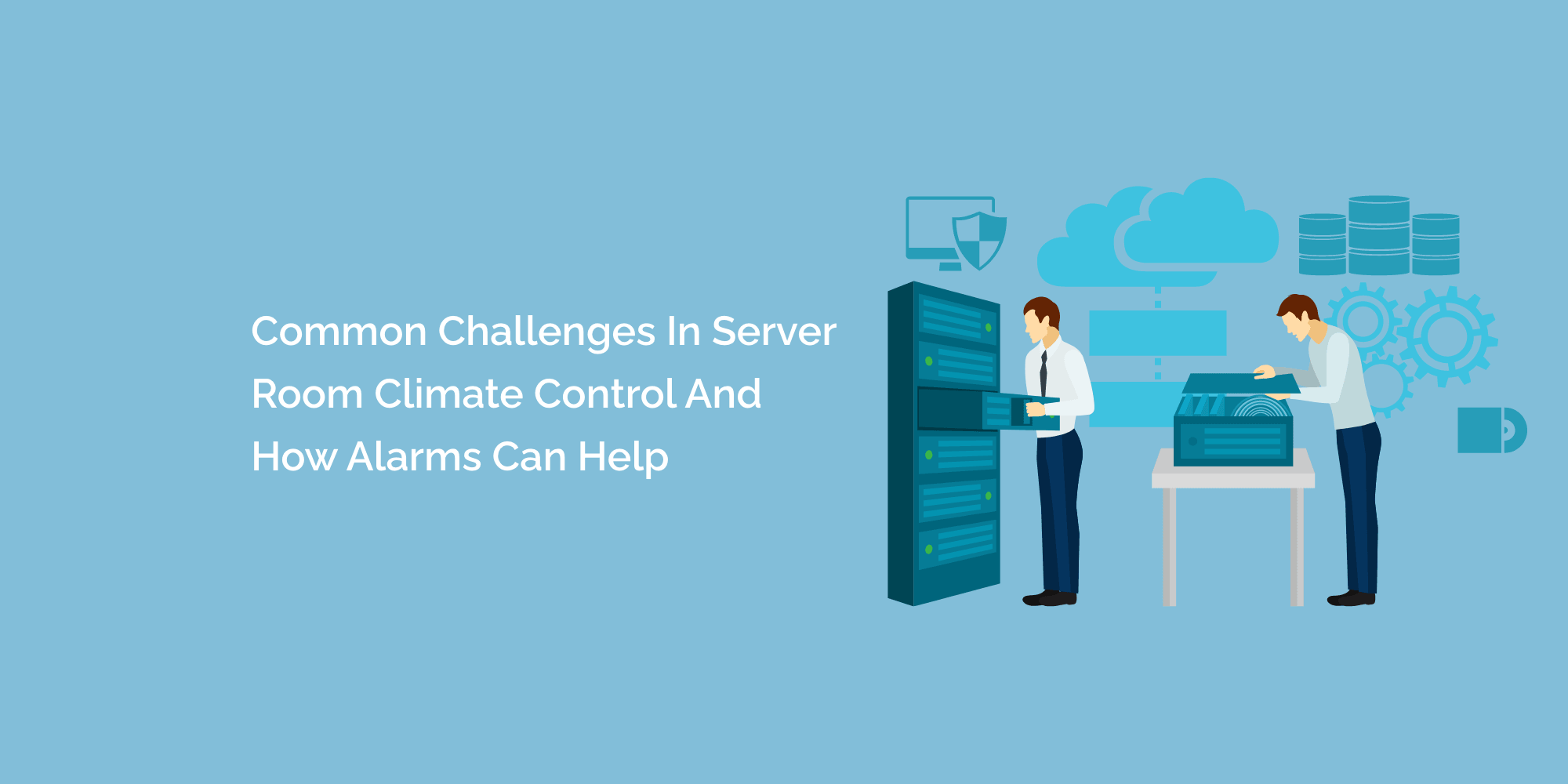Server room climate control is crucial for maintaining optimal conditions to ensure the reliability and longevity of critical IT infrastructure. However, data centers and server rooms face numerous challenges in maintaining the ideal climate. Temperature fluctuations, humidity imbalances, and equipment failures are just a few of the obstacles that can compromise the performance and security of servers.
In this blog, we will explore the common challenges in server room climate control and discuss how alarms can help overcome these challenges.
Temperature Fluctuations
Maintaining a consistent temperature is essential for the efficient operation of servers. However, server rooms are prone to temperature fluctuations due to various factors, including inadequate cooling systems, improper airflow, and changes in external weather conditions.
Temperature alarms can play a vital role in mitigating these fluctuations. By installing temperature sensors throughout the server room and integrating them with an alarm system, personnel can be alerted when the temperature deviates from the desired range. Alarms provide real-time notifications, allowing prompt action to address cooling system failures or adjust environmental controls. With timely alerts, potential issues can be resolved before they escalate, preventing overheating and potential equipment damage.
Humidity Imbalances
Humidity control is equally important as temperature control in server rooms. High humidity can cause condensation and corrosion, while low humidity levels can lead to static electricity buildup and equipment failures.
Humidity alarms, integrated with humidity sensors, help identify and address humidity imbalances. Alarms can be configured to trigger notifications when humidity levels exceed or fall below the desired range. This enables data center personnel to take immediate action, such as adjusting humidity controls or implementing additional dehumidification or humidification measures. By maintaining optimal humidity levels, alarms contribute to the longevity and reliability of servers and associated equipment.
Cooling System Failures
Cooling systems are critical for maintaining a suitable environment in server rooms. However, cooling system failures can occur due to power outages, equipment malfunctions, or inadequate maintenance.
Alarms integrated with power monitoring systems can help detect cooling system failures. Power monitoring devices can monitor the power supply to cooling units and trigger alarms when irregularities or power outages occur. Immediate alerts allow data center staff to address cooling system failures promptly, preventing potential overheating and minimizing the risk of equipment damage or downtime.
Power Outages and Instabilities
Power outages and fluctuations are significant concerns in server room climate control. Sudden power interruptions can disrupt server operations and compromise data integrity. Power instability, such as voltage fluctuations, can also impact the performance of server room equipment.
Power monitoring alarms provide real-time notifications when power outages or irregularities occur. By integrating power monitoring devices with alarm systems, data center personnel can be alerted immediately to take necessary action, such as switching to backup power sources or investigating the cause of power instability. Alarms enable proactive measures to minimize the impact of power issues on server room climate control and maintain uninterrupted operations.
Equipment Failures and Malfunctions
Server room equipment, including cooling systems, temperature sensors, and humidity control devices, can experience failures or malfunctions. These failures can go unnoticed without proper monitoring systems in place.
Alarms integrated with equipment monitoring systems can detect equipment failures and malfunctions. When equipment sensors detect abnormalities or malfunctions, alarms trigger notifications to relevant personnel. Prompt alerts allow for swift troubleshooting and repairs, minimizing downtime and reducing the risk of further complications.
Environmental Threats
Server rooms can be vulnerable to environmental threats, such as water leaks or smoke from fires. These threats can lead to severe equipment damage and data loss.
Alarms integrated with environmental monitoring systems, including water leak detectors and smoke detectors, can help mitigate environmental threats in server rooms. Water leak detectors connected to alarms can immediately alert personnel when water is detected, allowing for swift response to minimize damage. Similarly, smoke detectors integrated with alarms can quickly notify staff in the event of a fire or smoke, enabling prompt evacuation and fire suppression measures.
Conclusion
Server room climate control is a critical aspect of maintaining the reliability and longevity of IT infrastructure. However, data centers and server rooms face various challenges in achieving and maintaining the ideal climate. Temperature fluctuations, humidity imbalances, cooling system failures, power outages, equipment malfunctions, and environmental threats all pose risks to server room environments.
Alarms play a crucial role in overcoming these challenges. By integrating alarms with temperature sensors, humidity sensors, power monitoring systems, equipment monitoring systems, and environmental monitoring systems, data center personnel can receive real-time notifications when abnormalities or failures occur. These alerts allow for immediate action, preventing further complications, minimizing downtime, and safeguarding the integrity of critical IT infrastructure.
To maximize the effectiveness of alarms, it is important to strategically place sensors, regularly calibrate and maintain monitoring equipment, set appropriate thresholds, establish clear notification and escalation procedures, integrate with comprehensive monitoring systems, conduct regular testing and drills, and maintain detailed documentation.
By leveraging alarms as part of a comprehensive server room climate control strategy, organizations can enhance the security, reliability, and performance of their data centers. Alarms provide an additional layer of protection, enabling proactive and timely responses to temperature fluctuations, humidity imbalances, cooling system failures, power outages, equipment malfunctions, and environmental threats. Ultimately, investing in robust alarm systems helps ensure the smooth operation of servers and the uninterrupted availability of critical services.








